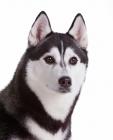Siberian Husky
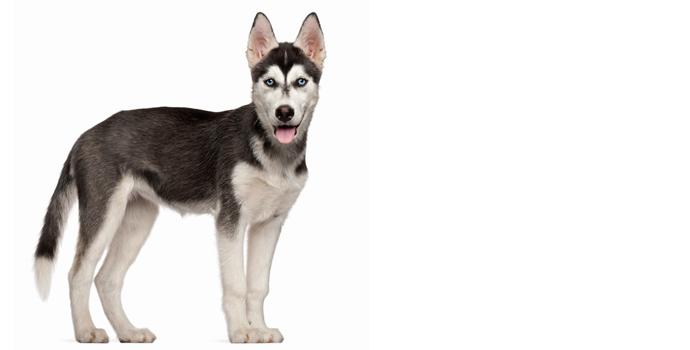
In my own words
I’m cold and I like it. In fact I love the cold. My descendants are from the Arctic so I’m perfectly suited to the cold. I hate it when it’s too hot. Thank god I live in a mostly cold climate country. Just look at my coat, could you see me in a sauna city? My favourite activity is playing sports and games with owners. We go on long walks and play lots of games. I really need that. I’m a working dog originally used for sledding in freezing conditions. While I love to be around my owners, I am very self-sufficient. Sometimes people have even called me determined. I love to roam and wander. Sometimes too much, which is why I’m mostly kept on a leach. I have a hunting instinct that takes over so it is best I don’t socialise wit other animals but dogs. I’ve got a mellow character and wouldn’t want to hurt any creature, if I can help it.
My ideal owner(s)
Singles
Families with older children
Active, sporty types
Cold-weather dwellers
Alaskans
What they say about me
Mellow
Cuddly and warm
Friendly and tame
Intelligent
Please read on, to find out more about me, and whether I will be someone you can be happy with for the next 12 years, or even longer!
Is this Siberian Husky for you?
Test your knowledge about the Siberian Husky
Information essential about the Siberian Husky
Kennel Club Group:-
Category:-
Working
Size:
Height: Male: 21-23.5 inches; Female: 20-22 inches
Popularity:
These dogs require companionship so do not do well with two career families. They are popular with families who can give them the attention they require.
Breed History:
Siberian Husky. These hardy, even-tempered dogs were not simply used as pets or helpful working dogs: the Chukchi people relied on them for survival. As dog sledges were the principal means of transport, these huskies were of paramount importance to them. They herded reindeer, pulled sleds and worked for long hours in the cold. Up until the 19th century, the Chukchi people were the only breeders of this particular sled dog. In the early 1900s, Americans in Alaska began to import these dogs for sledding competitions. But their fame spread even more rapidly when a team of Huskies helped transport lifesaving antitoxin to Nome, Alaska during a diphtheria epidemic. The Siberian Husky's endurance, stamina, and strength quickly made them a popular breed in the Arctic region.
Character:
Siberian husky will be content hanging out on the couch for a cuddle or playing a mellow game on the carpet. The Siberian husky also has a mischievous side: they can become restless and destructive when left alone for too long. An easy way to combat this, aside from giving them attention, is to get them a Siberian husky pal. These dogs are devoted to their families, but they are also excellent hosts when guests come over, rarely barking or acting territorial. Overall, what they say is true: Huskies are everybody’s friend. In light of this, they are not the best guard dogs. Whilst they do not often bark, they will howl, often just for the joy of it!
Temperament:
The breed is known for its good temperament and its suitability in a family environment. They love and need company and should not be left alone for long periods of time or they can become very destructive. They will be happy with other well-adjusted dogs but are keen and efficient hunters so contact with other household animals needs careful handling and training.
The Siberian husky is a compact and strong working dog. They are able to withstand temperatures as low as 75 degrees below zero, so are best suited for cooler to cold climates. They display a measure of dignity and reserve. The Siberian husky has an affectionate, gentle and friendly disposition. They are alert and eager to please. They are highly intelligent and have an independent spirit, which can sometimes be a challenge to their owner. Whilst the Siberian husky thrives in a family environment, it does not become overly attached to one specific person.
Conformation:
These are medium-sized dogs whose proportions show off their balance of power, speed and endurance. They are quick and light on their feet and move in a seemingly effortless manner, with good reach in the front and good drive from behind.
The Siberian husky has a medium length double coat. The under coat is dense and soft in texture. The outer coat is longer and coarse with straight guard hairs. The head is finely chiselled and fox-like in appearance, with the muzzle being of medium length and width. The stop should be clearly defined but not excessive. The nose should be black in grey, tan or black dogs; liver in copper dogs and may be flesh-coloured in pure white dogs. The eyes are almond-shaped and can be any shade of blue or brown, one of each colour or parti-coloured. The medium sized ears are triangular in shape and set high on the head, strongly erect and the inside edges should be quite close together. The jaws should be strong with a complete scissor bite. The neck should be of medium length and thickness, arched and carried proudly when standing. The front legs should be moderately spaced, parallel and straight with elbows set close to the body. The upper thighs should be well muscled and powerful, with well-bent stifles. The body should be straight and strong with a level top line from withers to croup, slightly longer than the height from the shoulders to the withers. The chest should be deep and strong. The feet should be oval and slightly webbed between the toes. The tail is well furred, similar to a fox's brush and is usually carried as a sickle over its back when at attention
Colour:
Their coat comes in a variety of colours and patterns. The most common colours are black and white, grey and white, copper red and white, and pure white.
Training:
Care:
The Siberian husky is by nature clean and free from body odor. They require daily brushing to minimize excess loose hair, tangles, and mats. Bathing should only be done when absolutely necessary with a mild shampoo. Shedding can be an issue with Siberian huskies: During normal times, their coats need only occasional grooming. However, during their shedding seasons (spring and fall) they need daily brushing with a metal comb to prevent hair from getting all over everything. Whilst they do need correct feeding, they are not fussy eaters and do not require as much food as other breeds of the same size demand
Siberian husky in the early hours and turn on the air conditioning inside. The Siberian husky has an innate and deep desire to run. They do best with a large securely fenced yard. If they are left alone for extended periods of time they will become bored which leads to digging and destruction. They make excellent walking and jogging companions provided they are very securely leashed and the climate is not too hot. The Husky is not recommended for apartment dwelling unless they are exceedingly well trained and sufficiently exercised.
Health:
Common health issues include hips dysplasia, eye problems and hypothyroidism. Siberian Huskies used for racing can often develop gastric and bronchial problems. However on a whole they have a low susceptibility to illness. A healthy Siberian husky can live as long as 16 years of age. They do not have large litters; the average is 6 pups and fewer than this is common. However litters of 12 have also been known.
You may also like:
Siberian Huskys looking for a home in UK »
(Interest Shown)"> (Interest Shown)" class="overviewimg"/>
(Interest Shown)" class="overviewimg"/>




If you like Siberian Huskys, you may be interested in breeds of the same size »
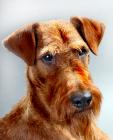
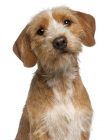

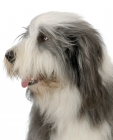

If you like Siberian Huskys, you may like other breeds with similar characteristics »
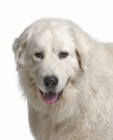
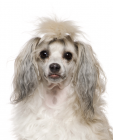
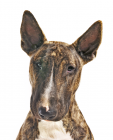
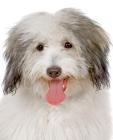
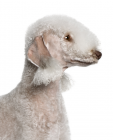
If you like Siberian Huskys, you may be interested in these other working dogs »


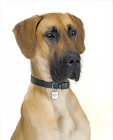

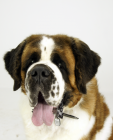
Advice on choosing your breed »
Find an animal shelter or rescue home where a Siberian Husky is waiting for a new home »
The following grid gives a fast track review, which covers all breeds. You can apply it to help you decide if a Husky is suitable for you, the environment where you live, your personality and your lifestyle. On the grid, 1= strongly disagree, and 5= strongly agree. For example, if you are looking for a dog to make a good walking companion, look down the list under ‘Activities’, and you will see that Huskies have lots of energy and are strong walkers, scoring 5. If you want a dog that is good for cold climates, look under ‘Environment’ and you will see that Huskies are suited to a cold climate, scoring 5. You might like to save or print off this section and keep it for reference while you check some other breeds before making your final choice.
Be the first to rate this breed »
|
*PLEASE NOTE: All our breed profiles are general, and all dogs are individuals. Always talk to the breeders and meet the owners you are buying from. Try to meet the dog and its parents if it is a puppy in their home environment.








